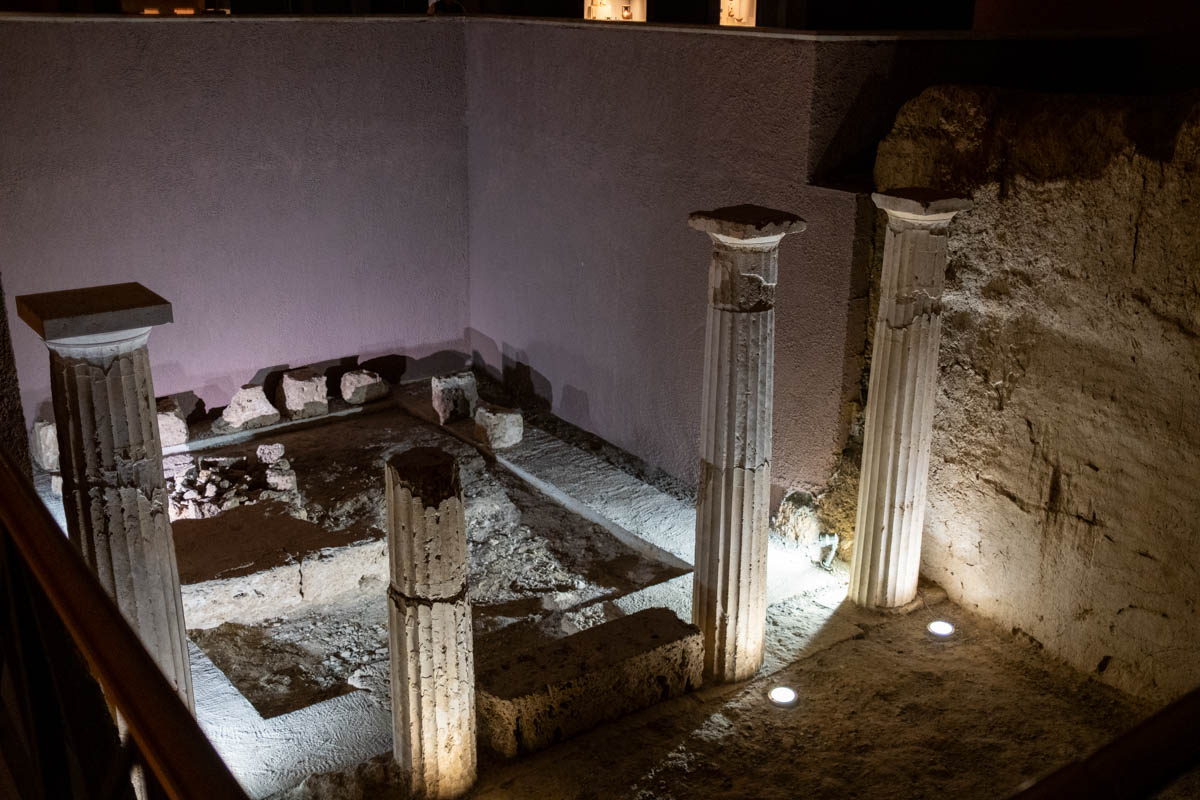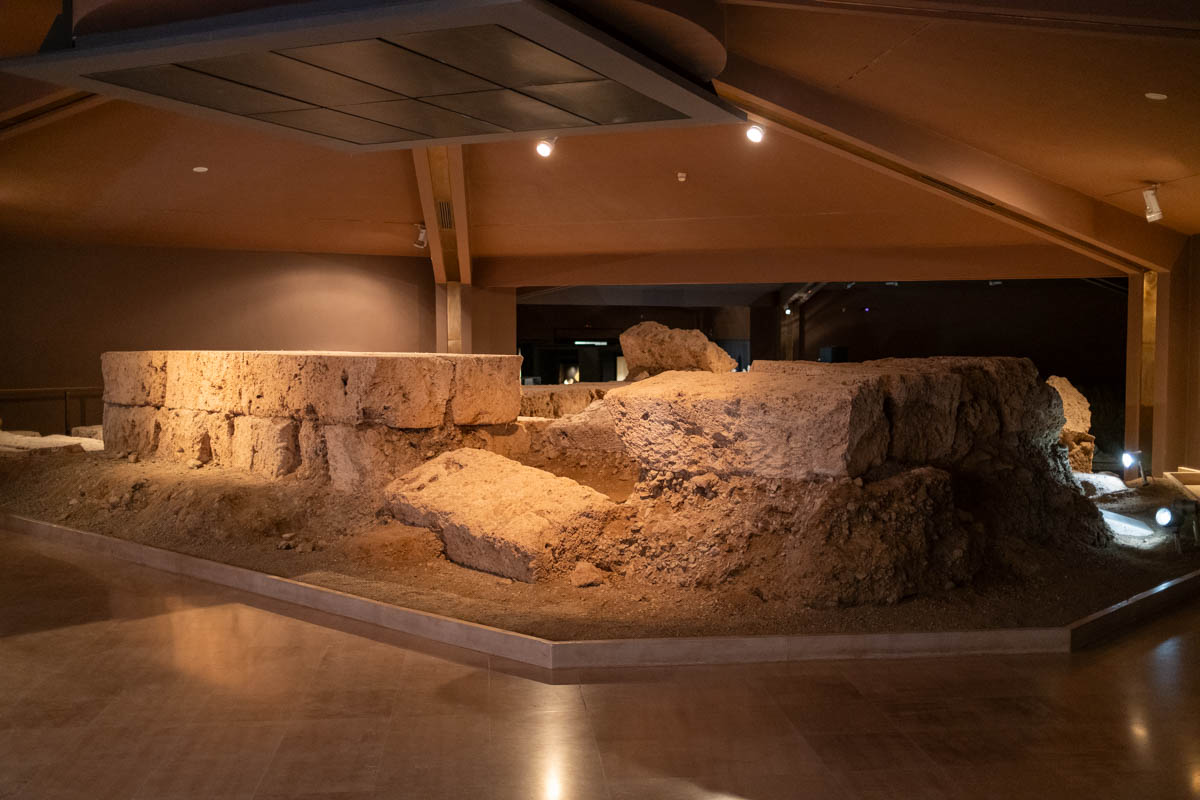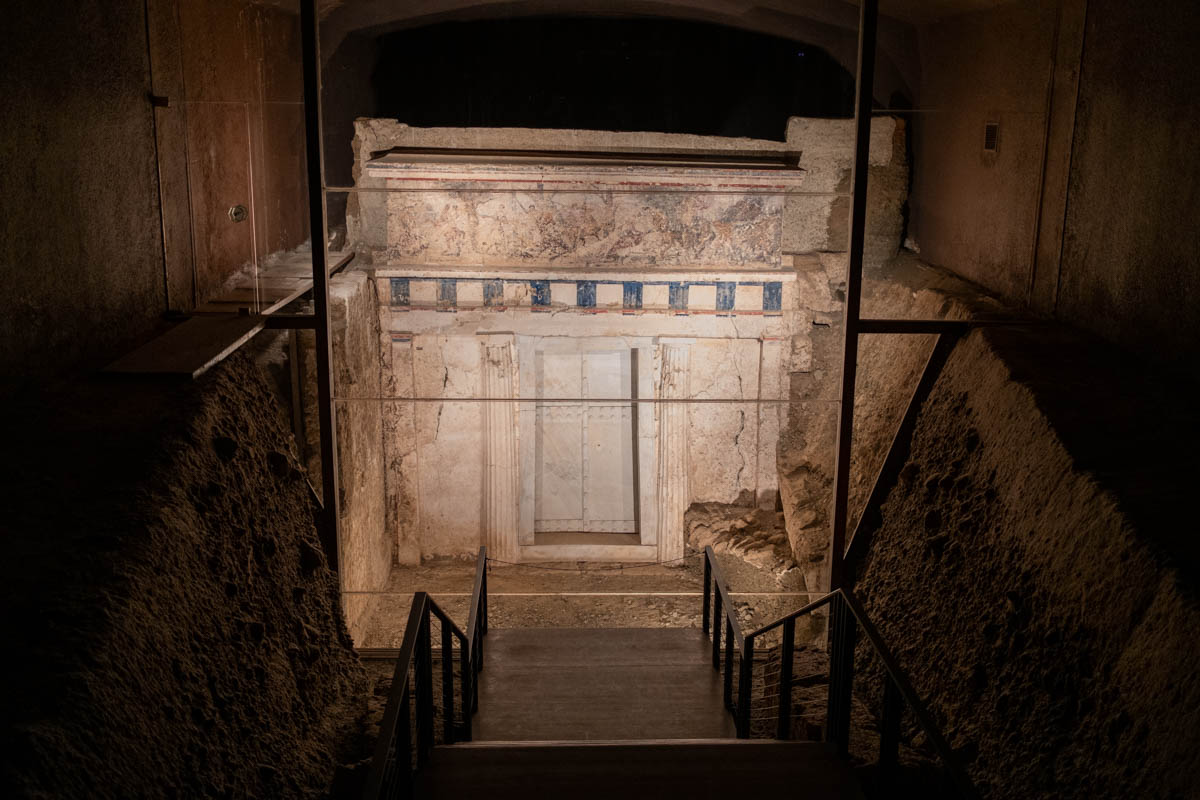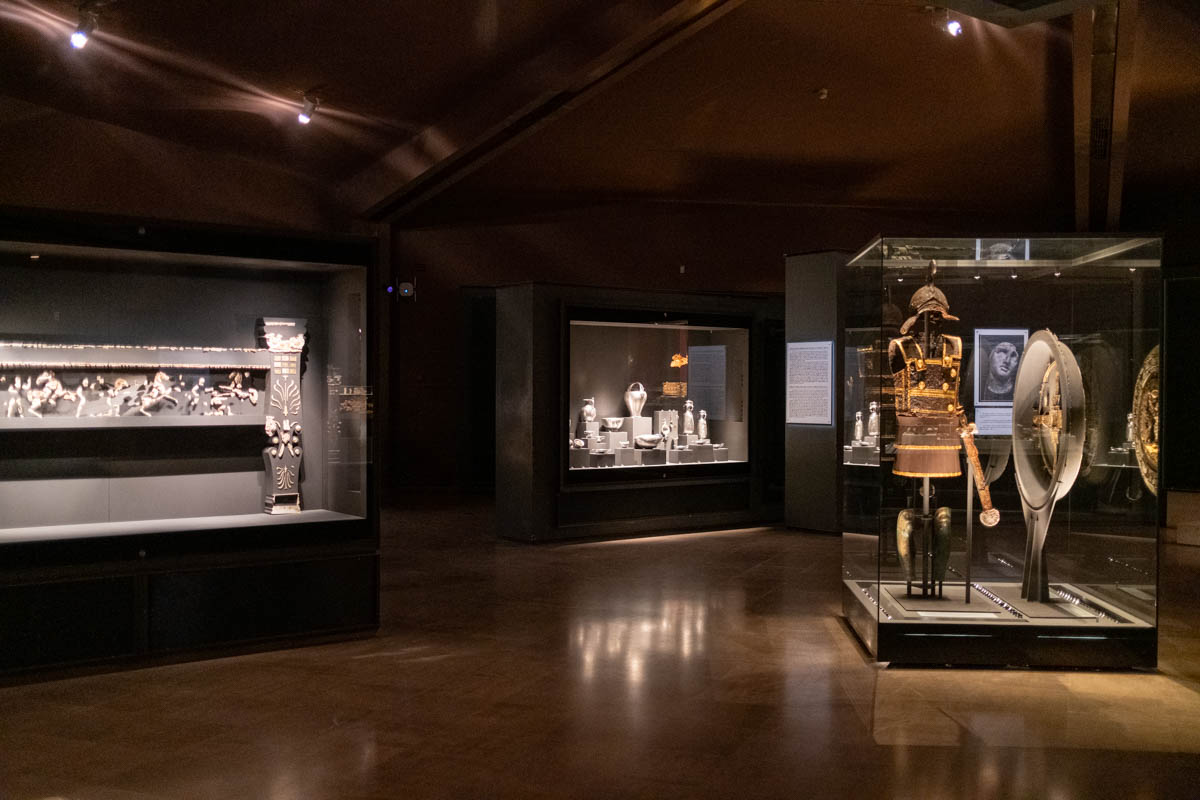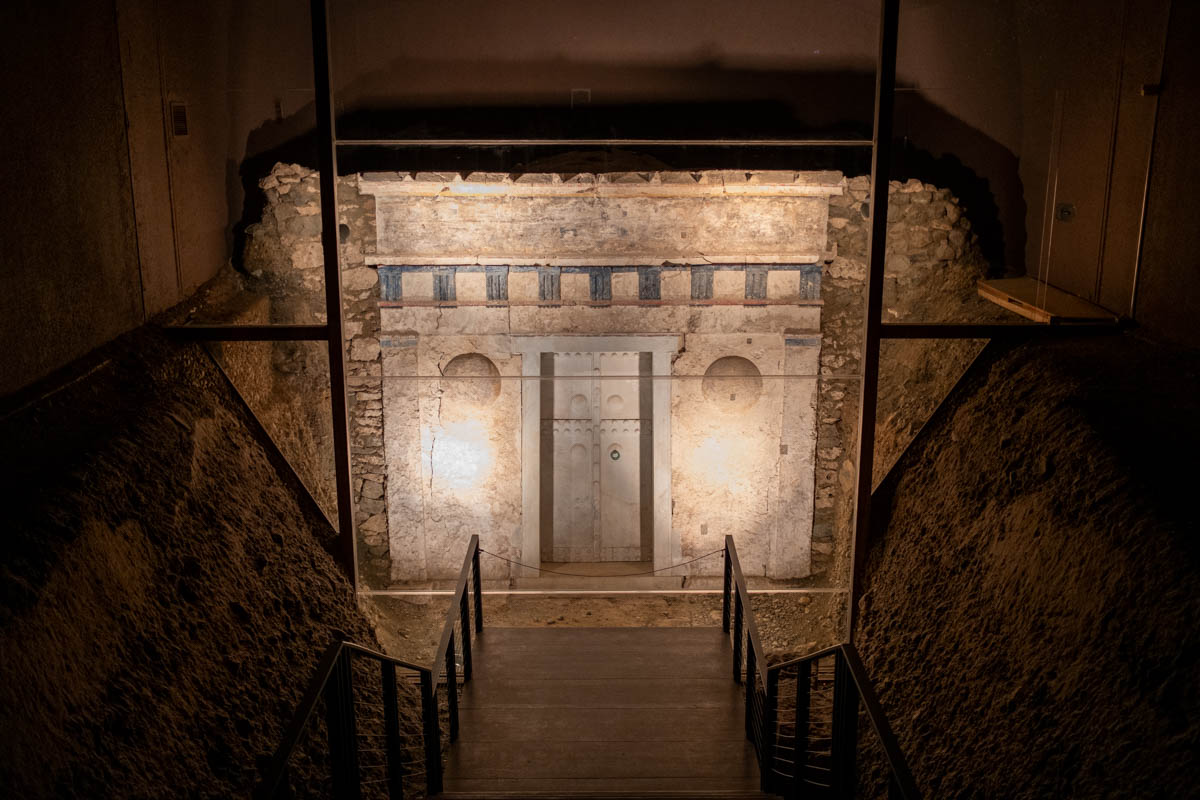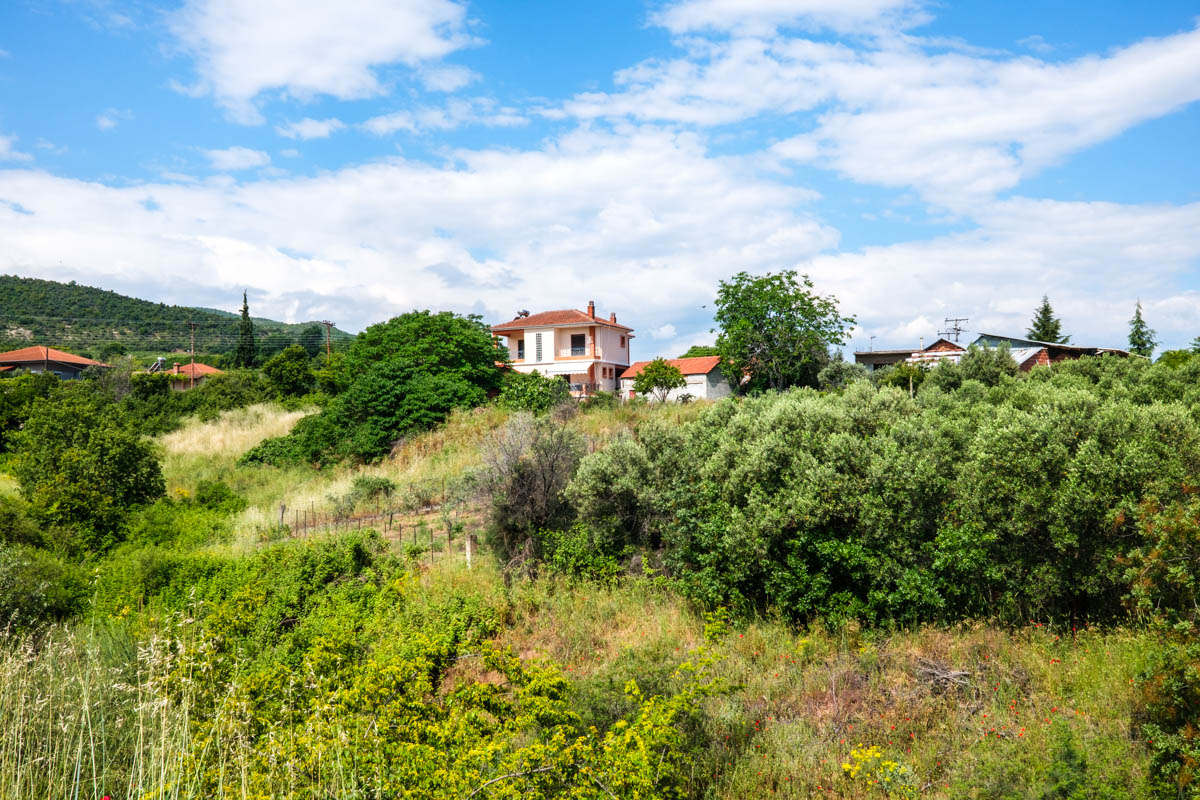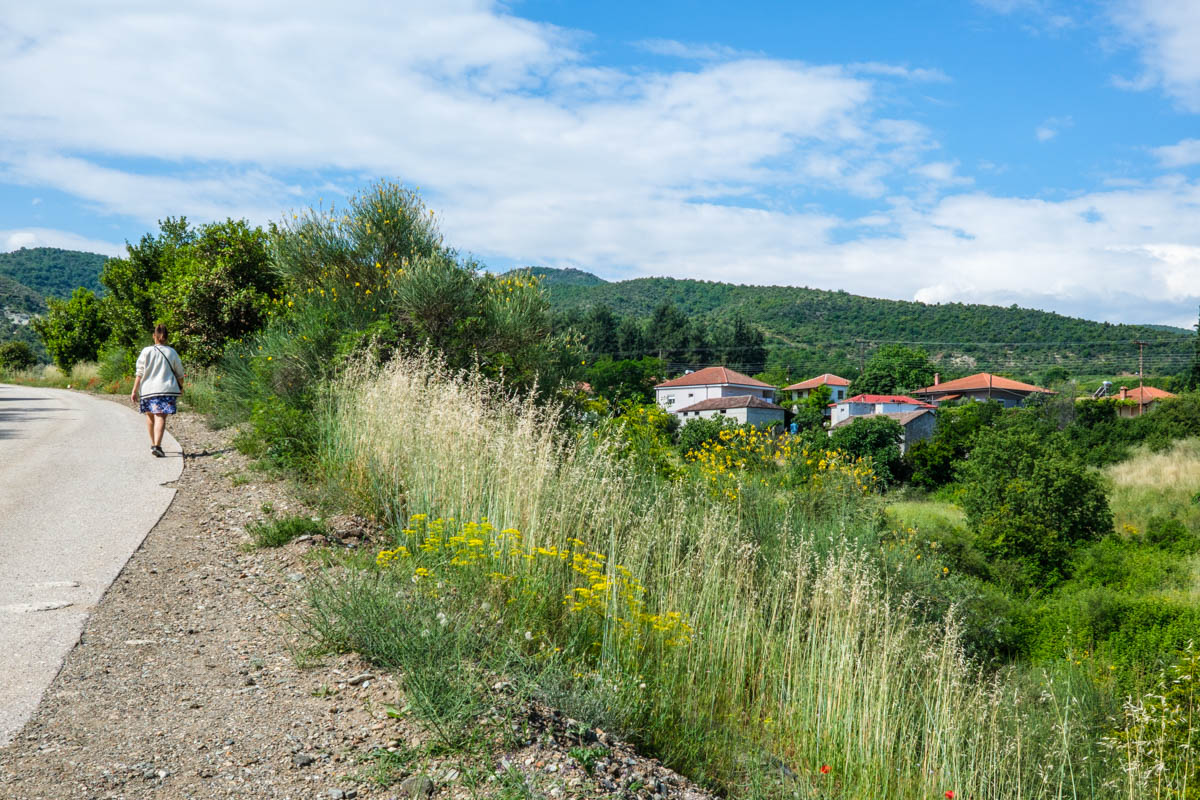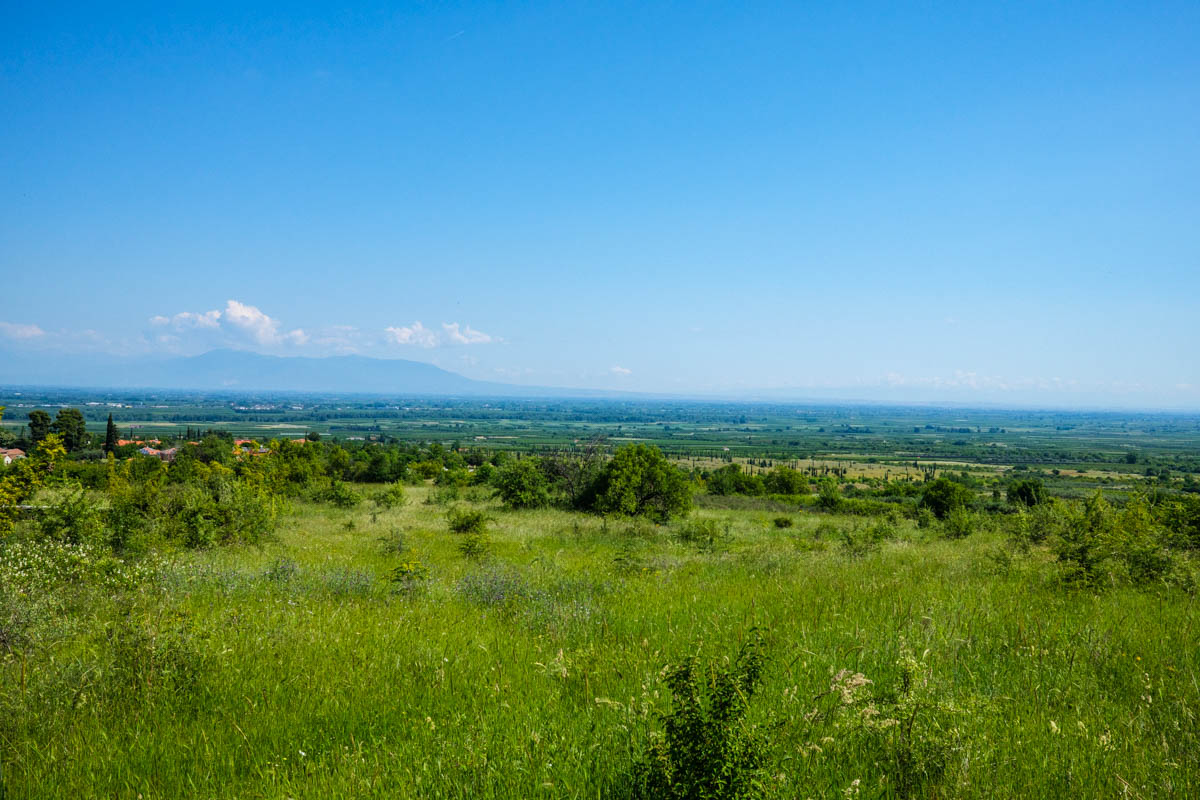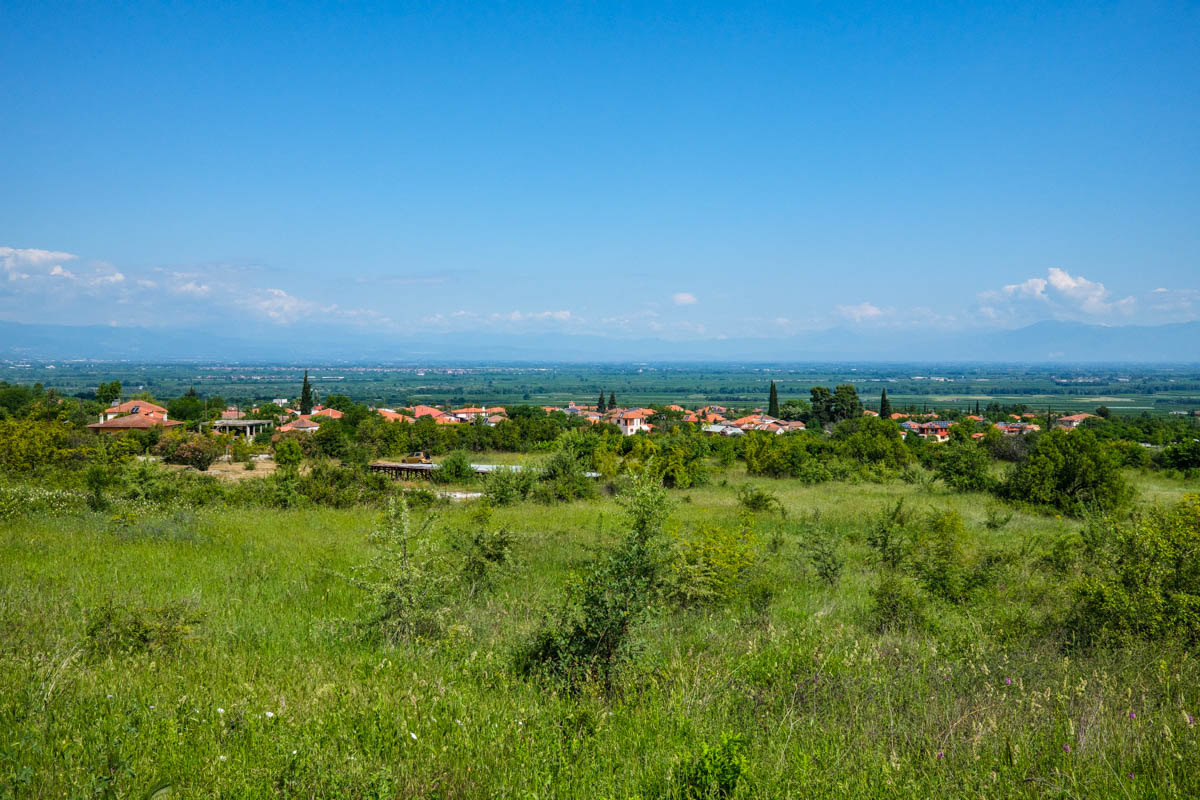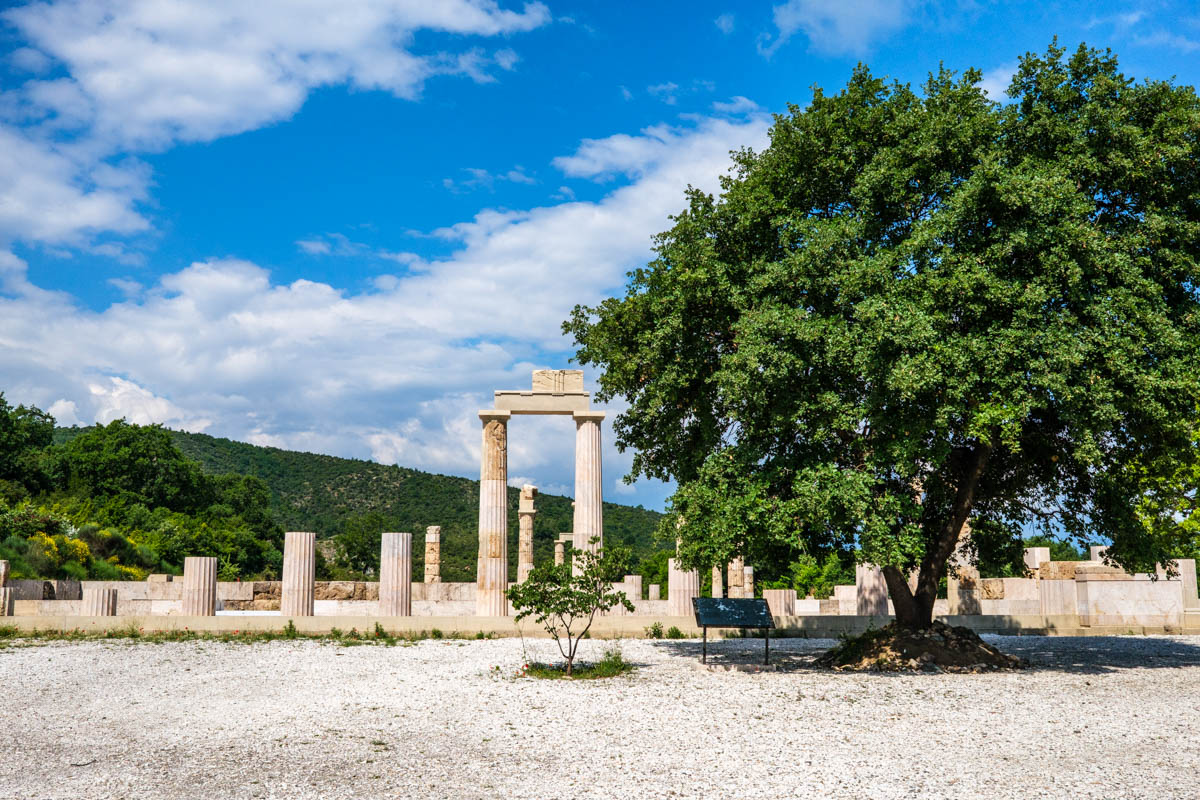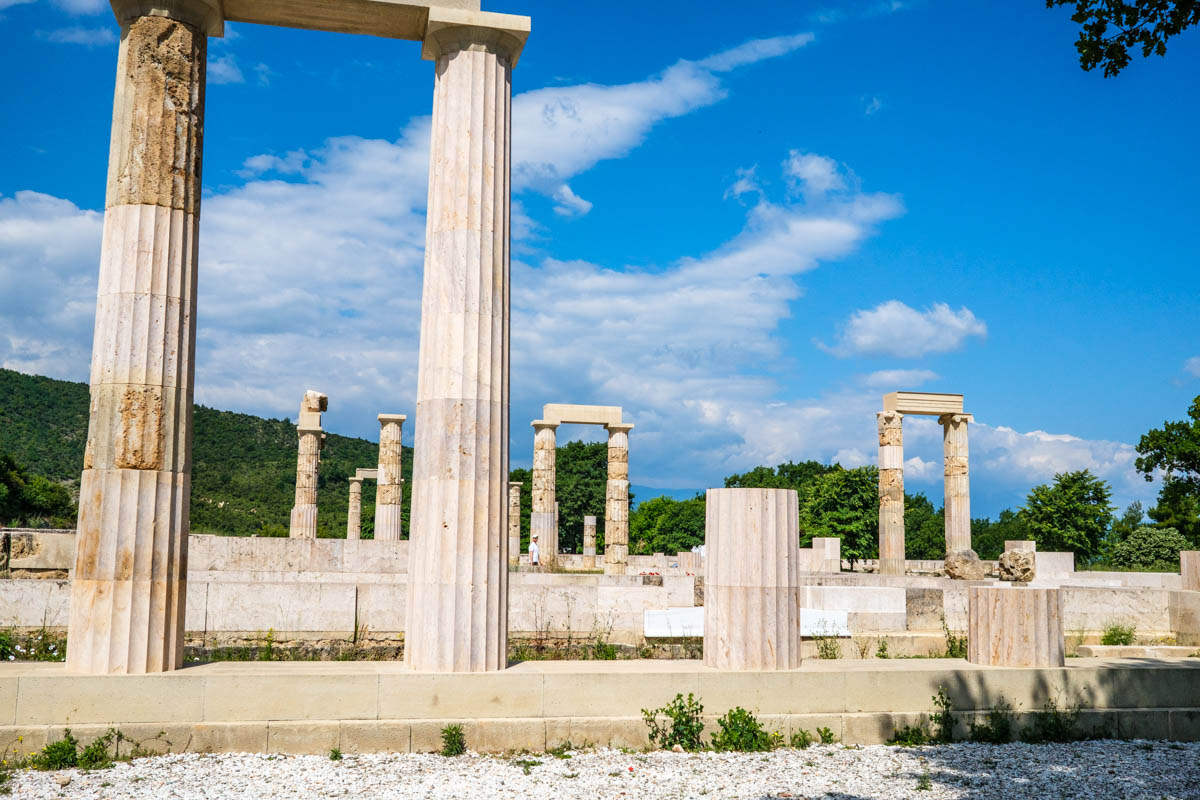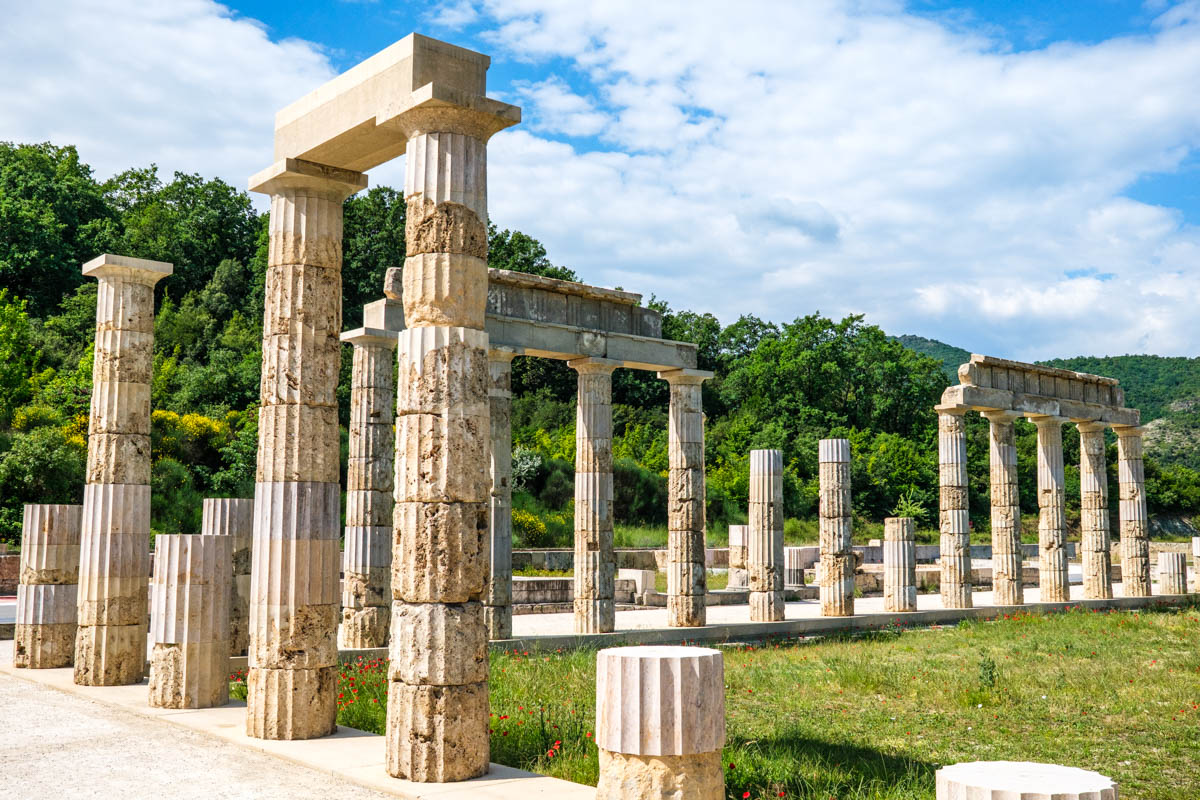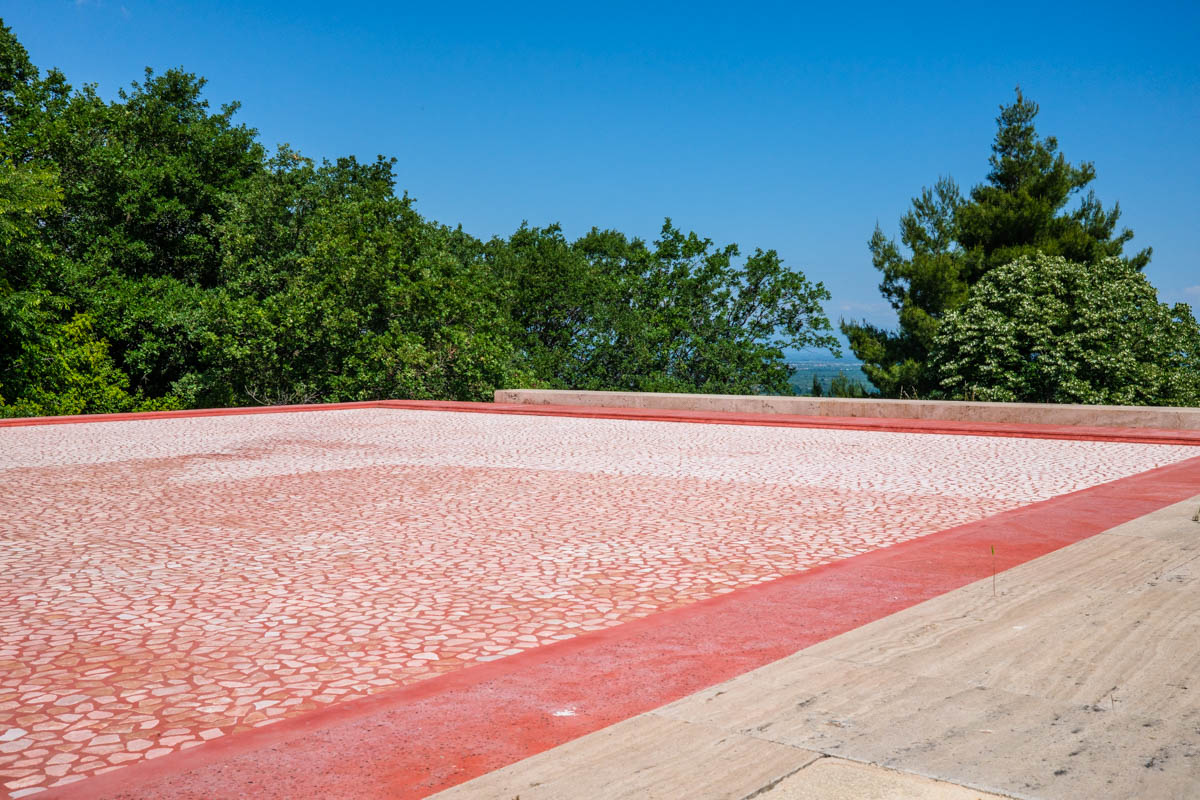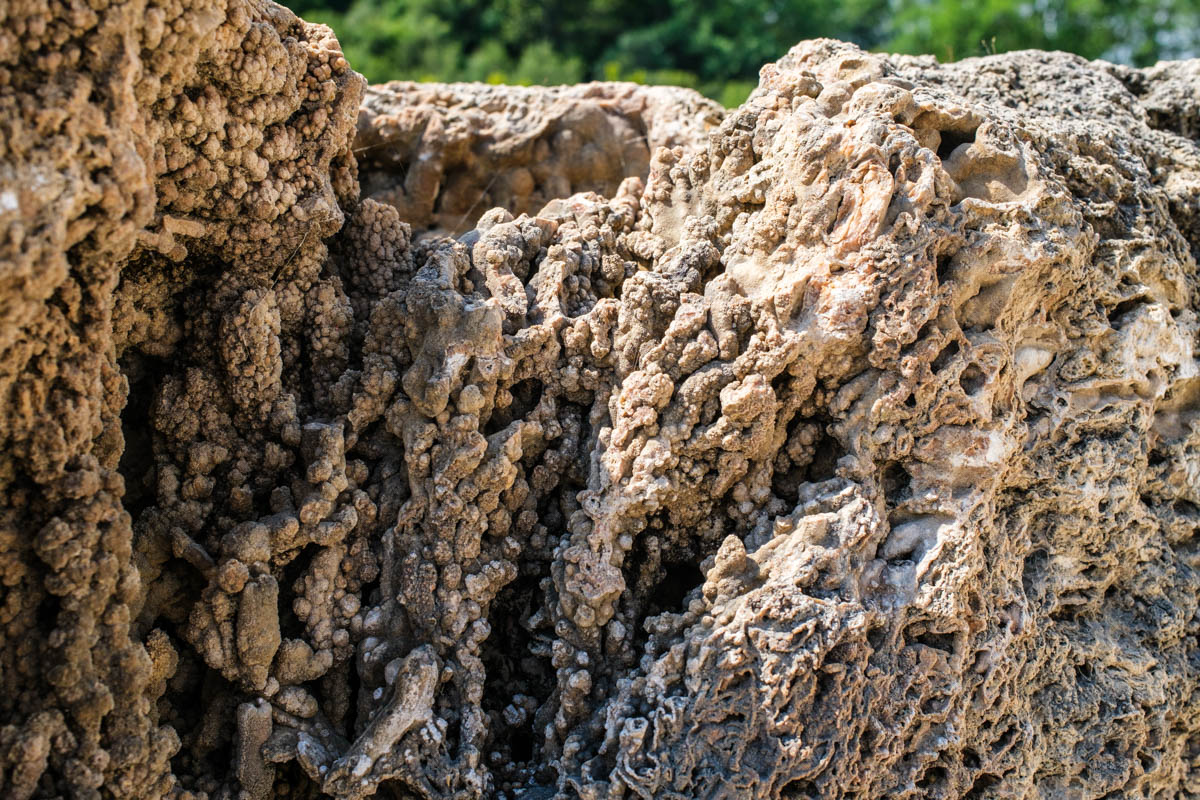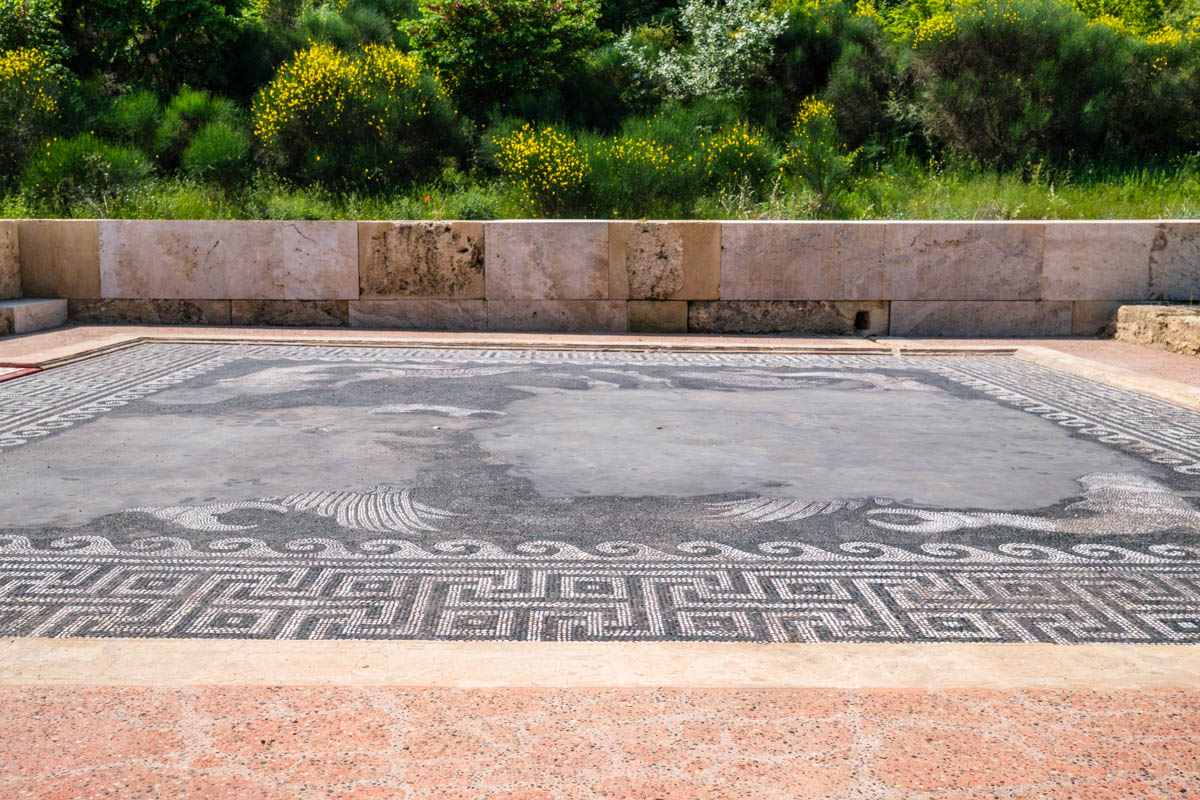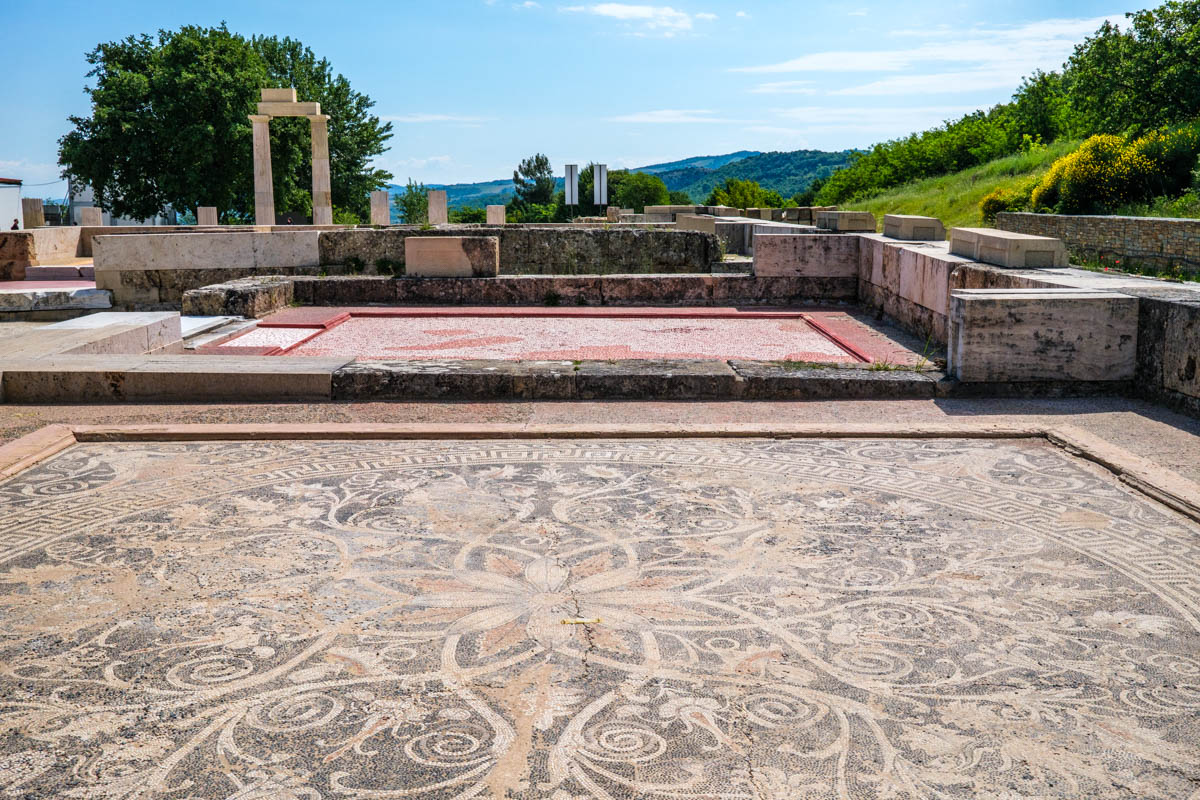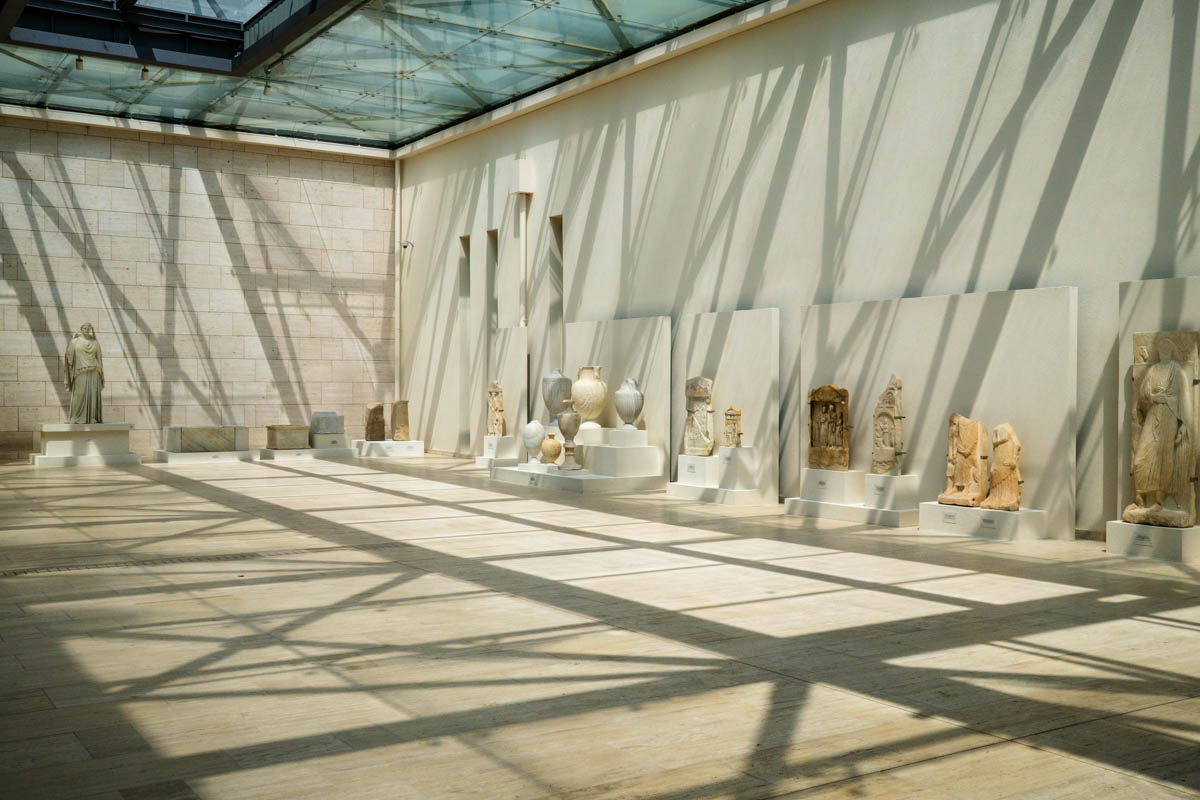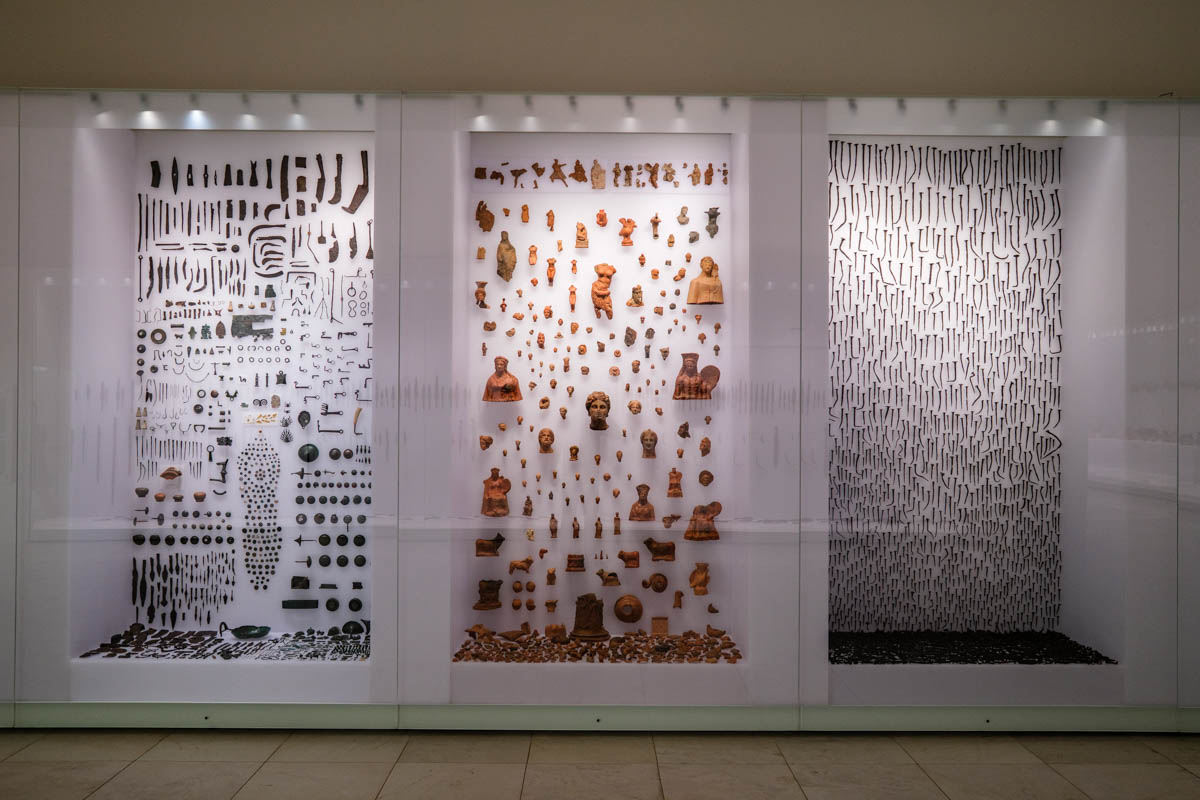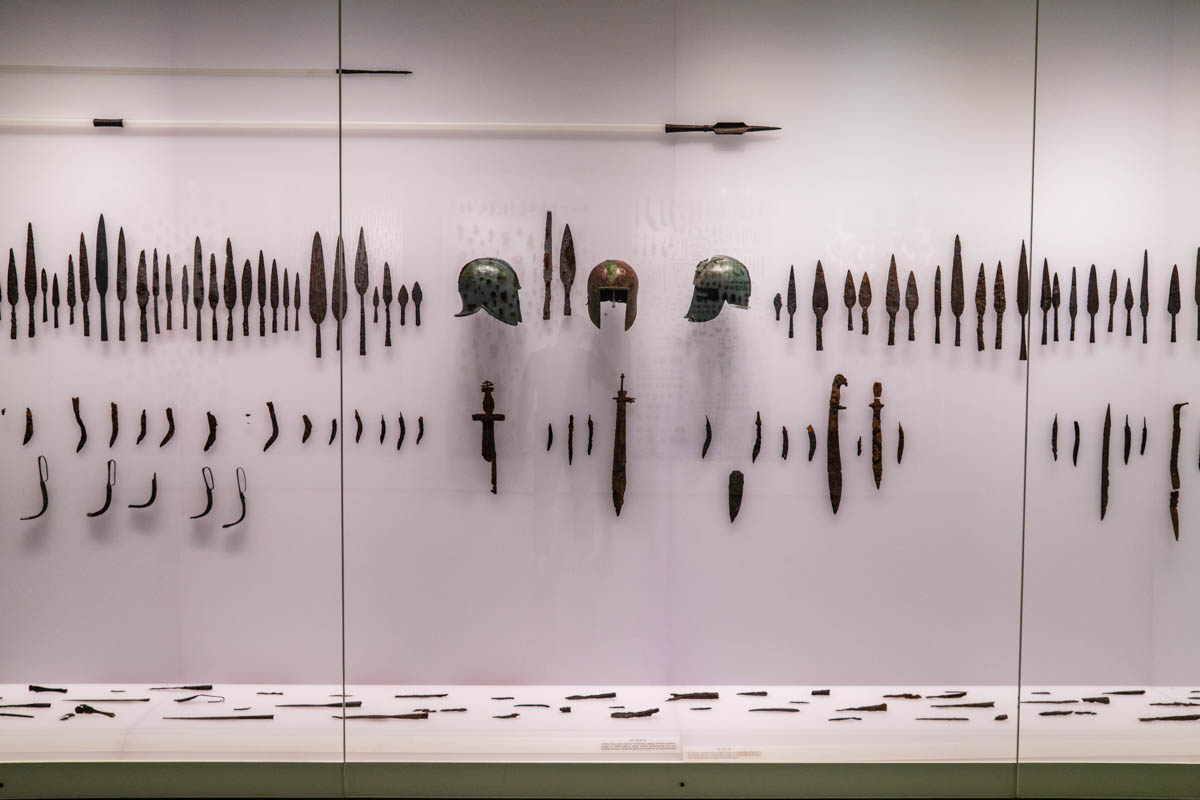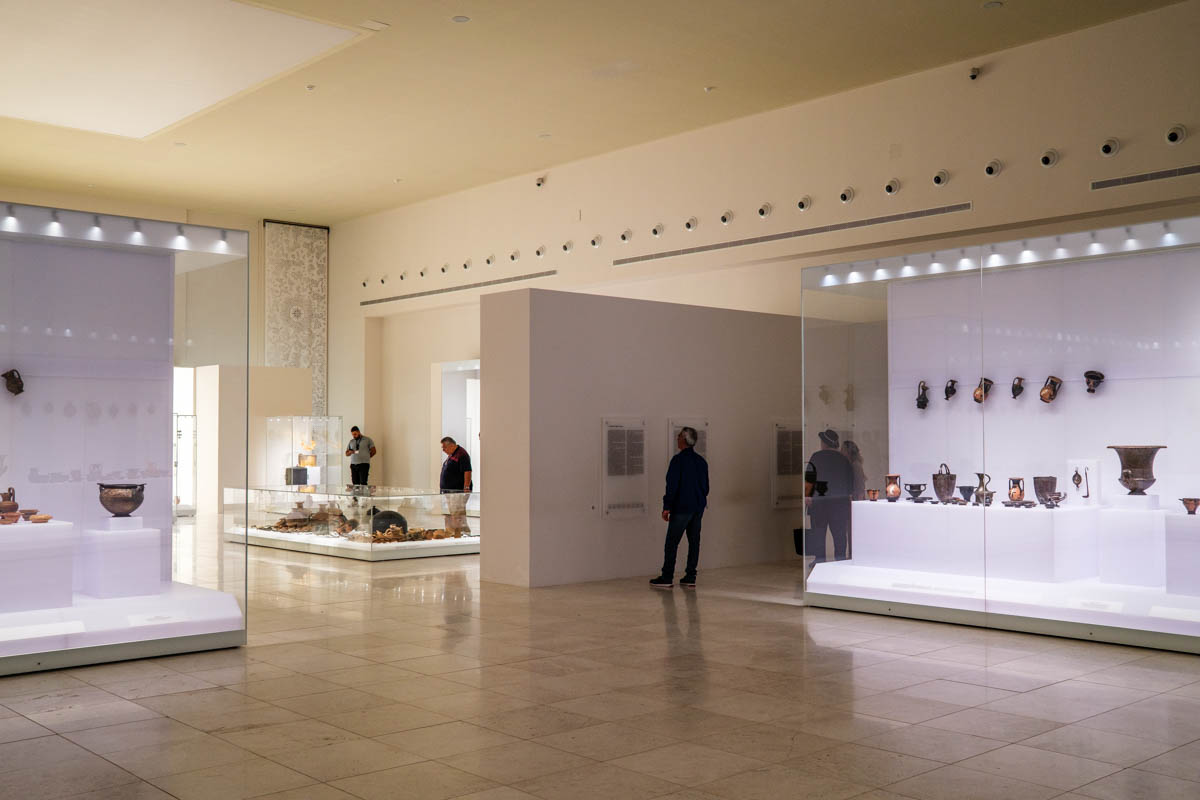VERGINA | Located about an hour’s drive east of Thessaloniki, is the town of Vergina. It’s the site of what was once called Aegai (Aegae), the original capital of ancient Macedonia. It’s home two of Greece’s most significant classical buildings – the Tomb of Phillip II, and the Palace of Aegai. A visit to the UNESCO World Heritage Archaeological Site of Aigai, is a fascinating, awe inspiring experience.
The exact location of Aegai was thought to have been lost to history, and it wasn’t until the mid 1800s that archaeologists began to suspect that it might be in or around Vergina. Excavations in the late 1800s brought up nothing of note, and the idea was abandoned by most. It wasn’t until 1977, when Greek archaeologist Manolis Andronikos started excavating the Great Tumulus at Aegai, that the earlier archaeologists were proved to be corrent.
While excavating the Great Tumulus, Manolis found that two of the tombs contained within remained undisturbed since antiquity. Inside the tombs was a wealth of treasures and historically important artefacts. Upon further investigation, it was confirmed that one of the tombs was that of Philip II, former king and uniter of ancient Greece, and father of Alexander the Great.
Museum of the Royal Tombs of Aigai
Open to the public, the Museum of the Royal Tombs of Aigai contains not just the tomb of Phillip II, but artefacts from the many other tombs and structures uncovered in the area. There’s things like Phillip II’s armour, his golden larnax, the gold funeral wreath of Queen Meda, and hundreds of pieces of jewellery, armour, tools, utensils, statues, and more. The restored condition of some of these artefacts is particularly impressive.
Palace of Aigai
A 20 minute walk, or 7 minute drive from the museum, is the Palace of Aigai. Reopened in January 2024, after 16 years of restoration work, it was and still is, the largest classical Greek building in the world. Dating back to 4th century BCE, the palace covered an area of 15,000 square metres in its prime. It’s where Alexander the Great was proclaimed king in 336 BC.
The ruins today occupy around 1,400 square meters. Walking through it, you can’t help but to imagine the majesty of this place when it was new. You can see several restored mosaics, marble flooring and grand columns. I recommend walking there from the museum as you get to see some beautiful natural vistas, and a few other sites along the way like the Ancient Theatre of Aigai.
Polycentric Museum of Aigai – Main Building
While in Vergina, you should also check out the Polycentric Museum of Aigai – Main Building. It’s a half hour walk or 3 minute drive from the Museum of the Royal Tomb, and is a continuation of that museum. It’s a new building, with an impressive collection of artefacts displayed across multiple indoor and outdoor spaces.
Across six distinct permanent exhibitions, visitors are taken through different facets of classical Greek society and history. The exhibitions are very well curated, providing not just information, but a cohesive context behind the artefacts.


